Apollo 17 astronauts saw strange flashes on the moon. Will Artemis crews see them too?
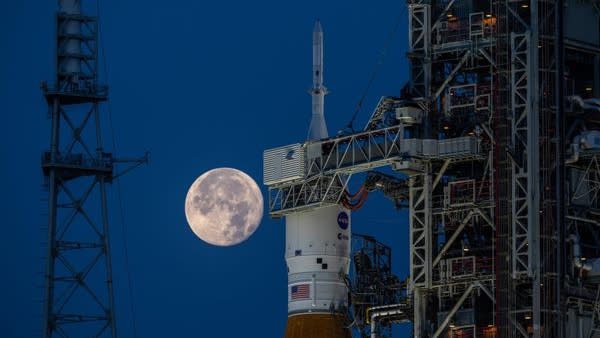
Specialists are now pulling together potential photography assignments for NASA's crewed Artemis 2 moon flyby, now projected to occur in September 2025.
Tucked inside their Orion spacecraft, they will be hurled moonward by NASA's Space Launch System (SLS) rocket and travel roughly 4,600 miles (7,400 km) beyond the far side of the moon during the nearly 10 day voyage. To help them prepare for their journey, lunar scientists have started plotting out photographic nice-to-have "Kodak Moments" for the four-person Artemis 2 crew to consider during out-the-windows viewing.
Surprisingly, one conceivable duty for the astronauts will be keeping an eye out for flashes of light on the lunar surface. It turns out that during the Apollo lunar landing program, astronauts observed three impact-induced flashes caused by meteors. What are the odds Artemis astronauts could see the same?
Related: Boom! Japanese astronomer catches meteorite smashing into the moon (video)
Color variations
"We have been working with the Artemis 2 crew to identify imaging and observation targets/plans for them during their journey to and from the moon," says Noah Petro, project scientist for Artemis 3 and is the current project scientist for NASA's Lunar Reconnaissance Orbiter mission.
Petro told Space.com that plans are being scripted on taking advantage of the Artemis 2 crew to observe and photograph the moon as regularly as the flight plan allows.
A focus of these preparations is choosing photographic targets for the period of time during the crew's closest approach of the moon, Petro says. "At that time our plan is to have the crew members observe the moon, looking for color variations on the surface, as was observed from orbit by multiple Apollo crew members."
Also, the Artemis 2 crew could make observations of the texture and properties of the surface, Petro adds, to either validate or refine spacecraft data that already exists.
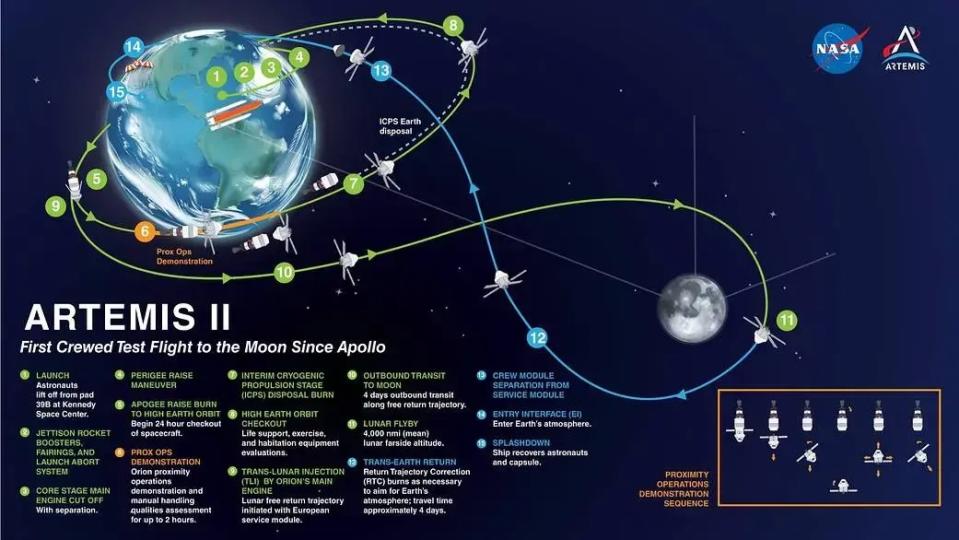
What are the odds?
Earth-based observations indicate that 5 ping-pong ball size meteoroids hit the moon every hour, says William Cooke, lead of the NASA Meteoroid Environments Office at Marshall Spaceflight Center in Huntsville, Alabama.
Telescopes situated at the NASA center, Cooke notes, observe one hit every two hours in an area of 4 million square kilometers. "Current spacesuits can be penetrated by particles 71 times smaller than this," he says, "so there are over 10 million hazardous meteoroids striking the moon every hour."
But that's over the entire surface of the moon, Cooke quickly adds, and that's 38 trillion square meters. "Astronauts have a surface area of only a square meter or so, making the odds of an impact on a moonwalker's suit pretty darn small."
As far as strike frequency, "normally we observe an impact for every 2 hours of observing time," Cooke says. However, during the Geminid meteor shower, the rates jump by a factor greater than 10, from 0.5 per hour to over 5 per hour, he says.
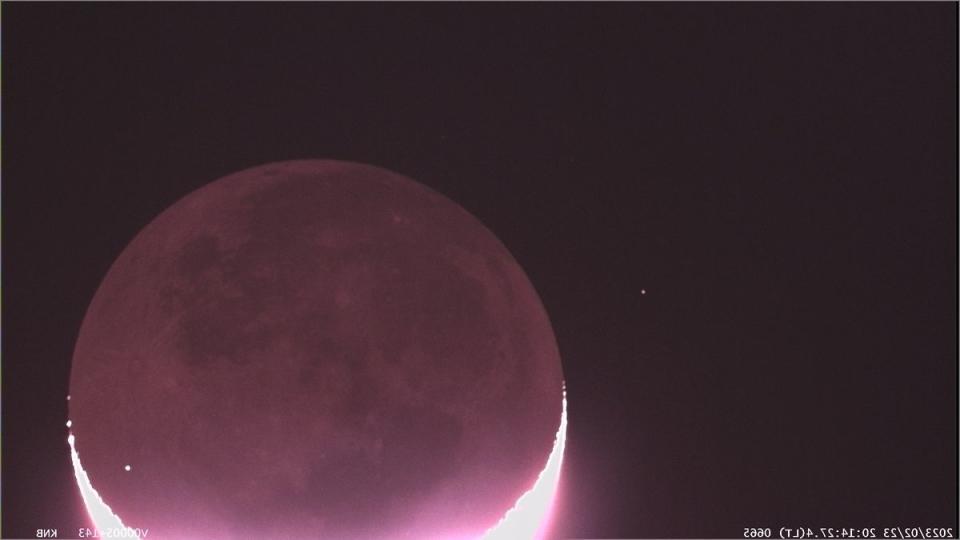
Pin prick of light
"There are a lot of meteoroids in the Geminid stream! Apollo 17 was in orbit around the moon during the 1972 Geminids — a perfect time to see impact flashes," Cooke says. Crew members at other times would have to look ten times longer to see a flash, he says.
"Hey, I just saw a flash on the lunar surface," Schmitt radioed during the Apollo 17 voyage. "It was just out there north of Grimaldi … you might see if you got anything on your seismometers, although a small impact probably would give a fair amount of visible light," the astronaut reported.
"It was a bright little flash right out there near that crater. See the crater right at the edge of Grimaldi," Schmitt. "Then there is another one north of it. Fairly sharp one north of it is where there was just a pin prick of light."
The bottom-line obvious, Cooke concludes, is that impact flashes usually last much less than a second, "so you would need a video camera to record them. The odds of catching a flash in a short exposure still image are vanishingly small."
New sizable craters
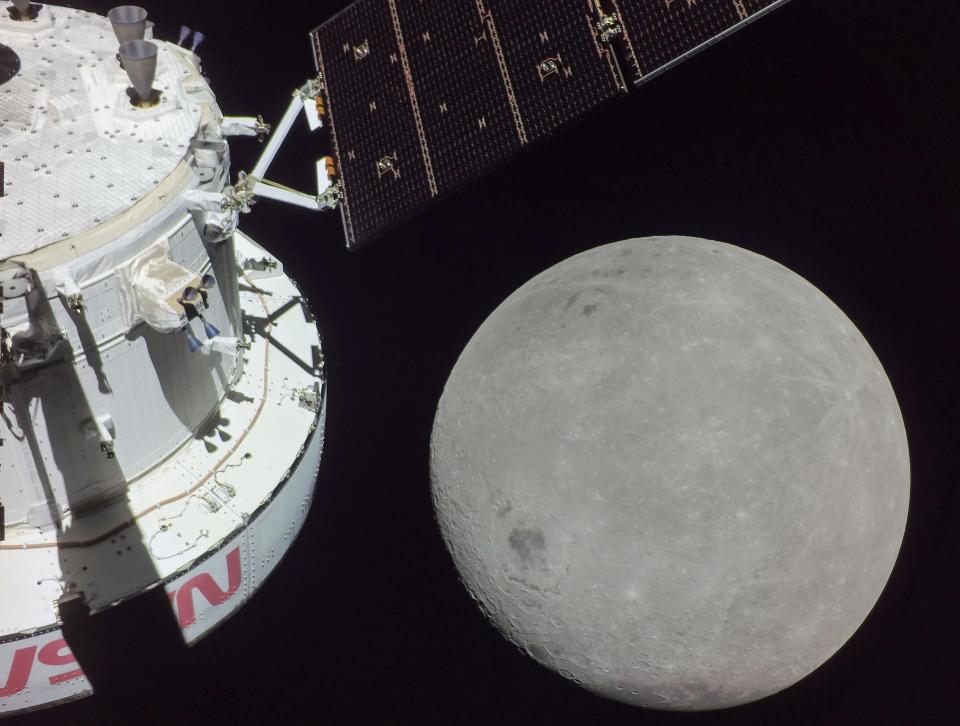
William Bottke is a leading lunar scientist at the Southwest Research Institute in Boulder, Colorado.
Indeed, if the Artemis 2 lunar astronauts see something interesting, Bottke advises that they should try to document the location of the site so follow-up observations can be done.
"Occasionally, some of the flashes are big enough to represent new sizable craters on the surface of the moon," Bottke says, and those sites can be potentially observed by NASA's patrolling Lunar Reconnaissance Orbiter, or another instrument in the future.
Risk: low but not zero
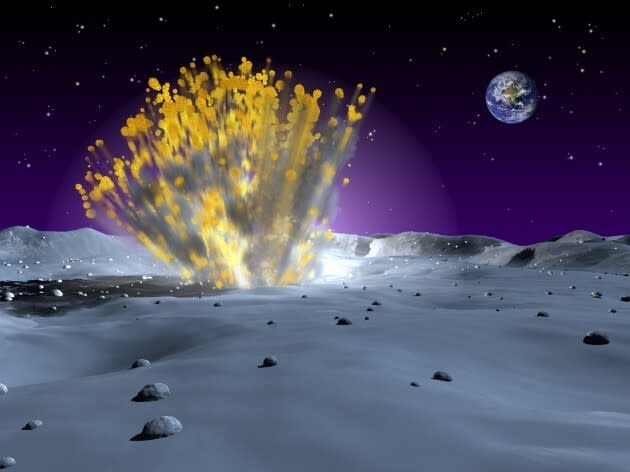
RELATED STORIES:
— Pow! A Meteorite Slammed into the Moon at 38,000 MPH During Lunar Eclipse
— Record-breaking meteorite crash on moon sparks brightest lunar explosion ever
— Apollo 17: The final moon mission of the Apollo era
The fact that Apollo crews saw these flashes, as have Earth-based observers, would seem to indicate that this occurrence is not rare. So should that be a worry for future permanent crews strutting about on the moon?
The Earth and moon are both frequently struck by small impactors and meteoroids, Bottke responds. He points to studies done by NASA's Meteoroid Environment Office about the hazard to the astronauts from meteoroids and small impacts.
"In general, the risk is considered low but not zero," says Bottke. "Moreover, the longer you stay on the moon, the greater the cumulative risk."
Meteoroid impacts will be a greater concern for lunar bases, Bottke says. "These structures will need to be built with meteoroid impacts in mind. Some kind of shielding or strong material will probably be needed when they are constructed."
The lunar science community is keenly interested in the observations that Artemis crews could make while on the moon.
"While we don't expect the crews to photograph any flashes," says NASA's Petro, "their photos and descriptions of the surface and lunar environment will be an important addition to lunar science."

